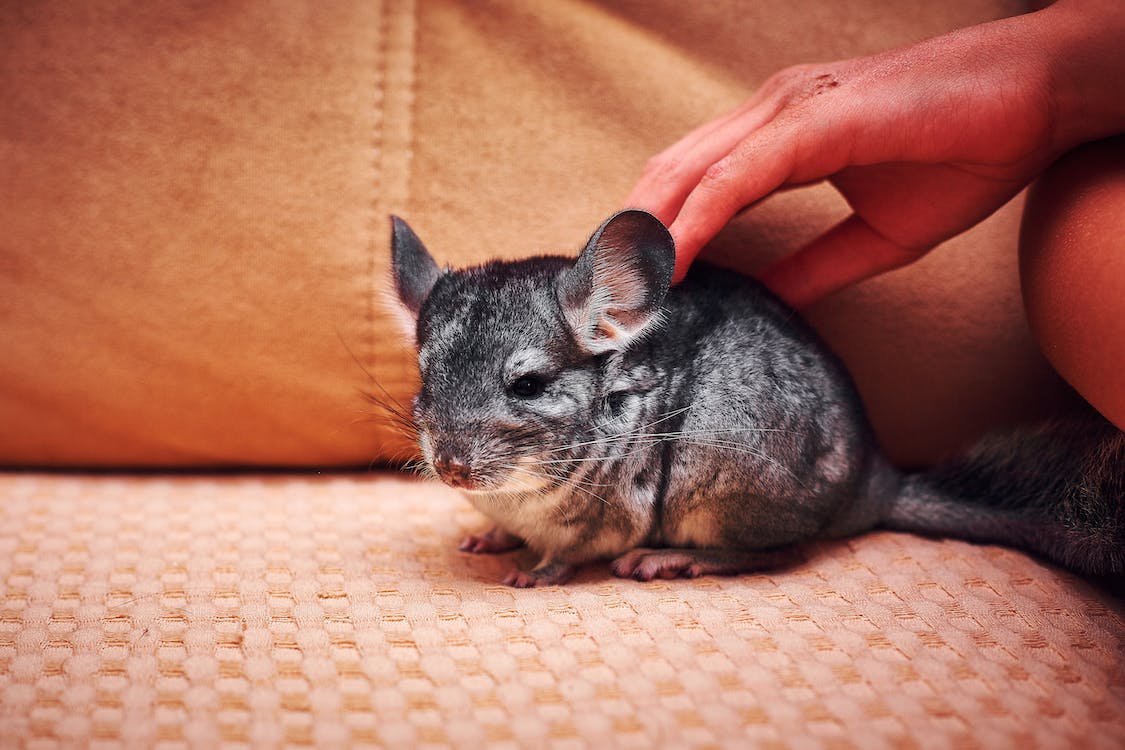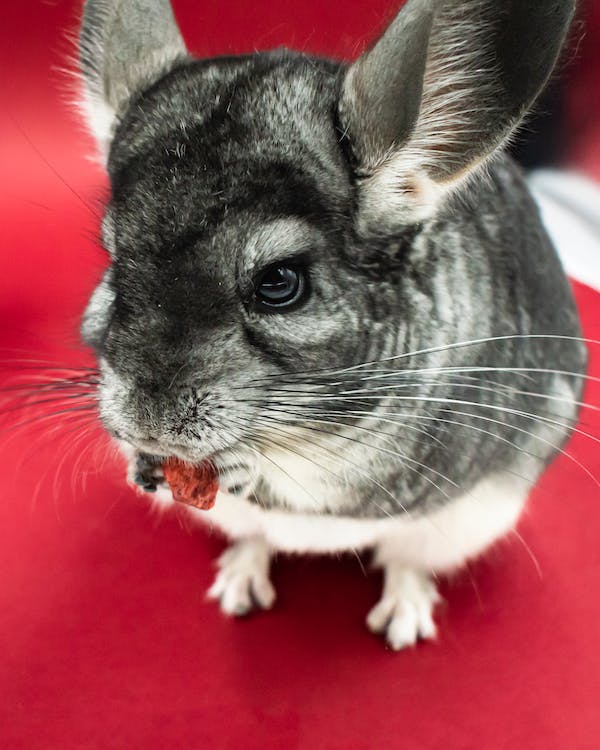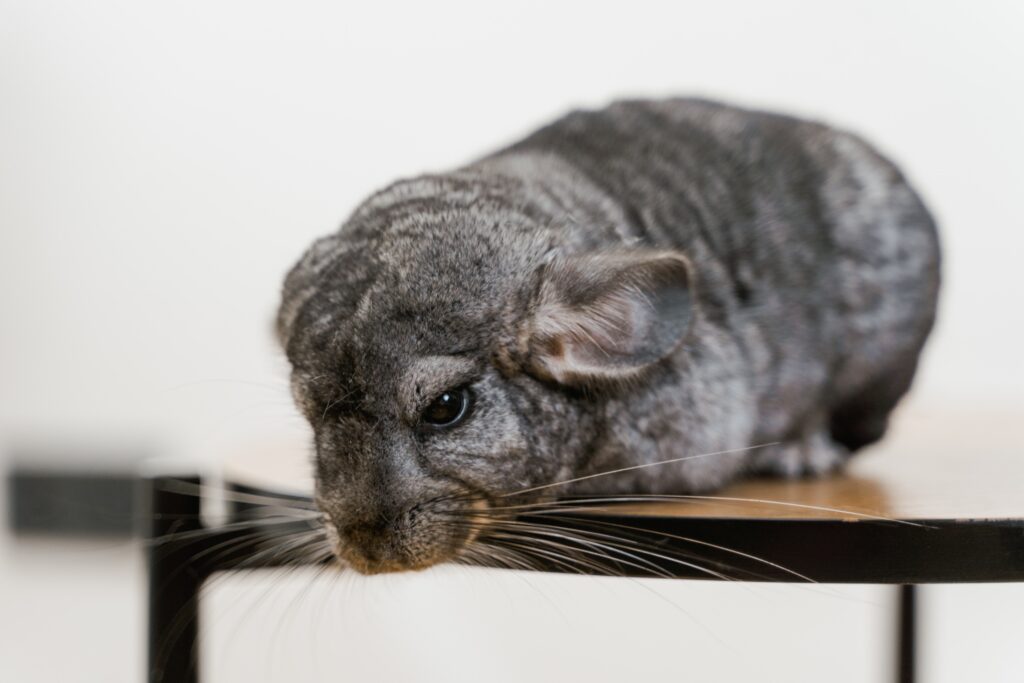What is a Chinchilla?
The two species of crepuscular rodents known as chinchillas—Chinchilla chinchilla and Chinchilla lanigera—belong to the order Caviomorpha. They are indigenous to the Andes highlands in South America and are slightly bigger and tougher than ground squirrels. They reside in “herds” of colonies at altitudes of up to 4,270 m. (14,000 ft). In the past, chinchillas could be found in Chile, Bolivia, and Peru, but currently, only Chile is known to have chinchilla colonies in the wild. They belong to the family Chinchillidae, along with their cousins the viscachas. They share a family tree with chinchilla rats.
Among all terrestrial animals, the chinchilla possesses the fur that is densest. They have 20,000 hairs covering their body, with 50 hairs emerging from each follicle. The sea otter has a thicker coat while it is submerged. The Andean Chincha people, who previously wore the chinchilla’s rich, velvet-like fur, gave it its name. After being persecuted for their very silky fur, chinchillas had become rather scarce by the end of the 19th century. Nowadays, the majority of chinchillas utilized by the fur business for apparel and other accessories are grown on farms. Chinchillas kept as pets are descended from C. Lanigera and are occasionally maintained as pets and may be categorized as a kind of pocket pet.
Where are Chinchillas from and What is Their History?
We must first think about where chinchillas reside and how this impacts some parts of their care in order to have a greater understanding of how to care for a chinchilla.
As the Andes Mountains in South America have a considerably colder and drier climate than other areas, chinchillas have evolved exceptionally thick fur as a means of insulating themselves from the cold.
Chinchillas have evolved to be excellent in running and jumping at great speeds and heights relative to their size because they are considered prey animals in their native habitat, making them more wary creatures.
Because there is an abundance of grass, wood, and plants for chinchillas to consume, their food in the wild is comparable to their diet in captivity.
Species
z
The two chinchilla species still in existence are Chinchilla lanigera and Chinchilla chinchilla, originally known as Chinchilla brevicaudata. In comparison to C. lanigera, C chinchilla has a shorter tail, broader .neck and shoulders, and shorter ears. The latter, however rare, may be found in the wild whereas the former is now in danger of being extinct. It is believed that chinchillas kept as pets belong to the C. lanigera species.
Roles with humans
Fur industry
International trade in chinchilla fur dates back to the 16th century. Its fur is well-known for its very soft texture, which results from each hair follicle producing, on average, 60 new hairs. Though some big items can be constructed entirely of fur, the color is often fairly even, which makes it perfect for little garments or the lining of larger ones. While chinchillas are quite tiny, a single full-length coat made with chinchilla fur may take as many as 150 pelts. One of their species was wiped off as a result of their usage for fur, while the other two suffered greatly. Despite the fact that it is forbidden to shoot chinchillas in the wild, ongoing poaching has brought them dangerously close to extinction. Chinchillas raised in captivity are still bred for their fur.
As pets
The long-tailed chinchilla, Chinchilla lanigera, is the ancestor of the domestic chinchilla. As the other species, the short-tailed Chinchilla has been driven almost to extinction, they are more prevalent in the wild. Because of this, domestic chinchillas have bigger ears, longer tails, and leaner bodies. A chinchilla can survive up to 20 years under human care, compared to the ten years it typically lives in the wild.
While they are well-liked pets, chinchillas need a lot of activity and dental care since their teeth continue to develop throughout their lives. Moreover, because they can’t sweat, they need a temperature-controlled habitat.
The animals do not take water showers; instead, they have a few times a week dust baths, in which they roll about in particular dust consisting of fine pumice. Its dense hair eliminates loose dander and protects against parasites like fleas.
Pet chinchillas need easy access to food, water, and places to hide so they may snooze for long stretches without being disturbed. Because chinchillas are often very sociable animals, owners should spend lots of time with their pets. They are also readily shocked by loud, unexpected noises due to their keen hearing.
In scientific research
Since the 1950s, chinchillas have been utilized in research. Researchers have been primarily interested in chinchillas’ auditory systems since the 1970s. Additional research areas that employ chinchillas as an animal model include the study of Yersinia and Pseudomonas infections, pneumonia, listeriosis, gastrointestinal disorders, and Chagas disease.
When you’re very fond of animals, the chinchilla can be one of your favorite pet animals. They are needlessly adorable, cute, and gentle animals, whereas they need very low expenses to raise them.
With a little knowledge of chinchilla habitats foods, grooming, you can handle them very easily. Regardless of taking care of your chinchilla, you also need to know how to make them happy and relaxed. Overall, taking care of the chinchilla is not such a big deal.
So, how to take care of your chinchilla? Ever raised a chinchilla? If not, perhaps you have no idea of taking care of chinchilla.
Don’t worry! With our guidelines, you’ll find it very enjoyable to keep chinchilla as your pet. Let’s dive into the article to know how to take care of your chinchilla.
How to take care of your chinchilla?
Indeed, the chinchillas are the great animal as a pet but a little bit sensitive. So, you must have to handle the pet delicately to keep them healthy and happy.
Don’t have prior knowledge of handling chinchilla? Let’s get the broad knowledge of handing them.
Feeding and diet
The high-quality chinchilla consumes limited types of vegetables and fruits. Give them clean and fresh food along with the chlorine-free water to keep their tummy well.
Avoid feeding the pet food with high fat and sugar such as chocolate, caffeine, etc.
What Do Chinchillas Eat?
A chinchilla’s diet should include the following:
- Water that is clean, fresh, and changed every day is given to tiny animals in a water bottle.
- A little amount (1-2 tablespoons/day) of premium chinchilla pellets together with fresh produce and fruits in smaller portions.
- Offering deep leafy greens, carrot tops, squash, and bell peppers to chinchillas is appropriate.
- Timothy hay or other low-calcium grass hay, including oat, meadow, and orchard grass, should always be available since chinchillas eat primarily this type of grass. Hay gives the usual microorganisms that reside in chinchillas’ gastrointestinal tract fiber to aid in healthy meal digestion.
- Alfalfa hay’s high calcium content can cause bladder stones to form in adult, non-lactating chinchillas, hence it should only be routinely provided to developing young animals or nursing moms.
- A tiny amount of high-fiber snacks, such as commercially produced chinchilla treats, a handful of unsweetened whole-grain Cheerios, a sprinkle of dry oatmeal, or a few pieces of dry shredded wheat cereal, may occasionally be given to chinchillas. Never let treats make up more than 10% of a chinchilla’s diet.
- Foods containing alcohol, caffeine, or chocolate should not be fed to pets since they are poisonous and can cause death. Avoid giving your chinchillas high-sugar and high-fat goodies like dried fruit, raisins, nuts, and seeds since they may disrupt the usual flora in their digestive systems and cause diarrhea and bloating.
Observe the following when feeding your chinchilla:
- There should always be hay and water accessible.
- Just a tiny amount of pellets (1-2 tablespoons/day), together with a few servings of vegetables and fruits, should make up more than 10% of their regular diet.
- Fruits and vegetables that are not used within 24 hours should be thrown out since they are likely to spoil.
Typical chinchilla behavior and appearance
- Chinchillas are highly energetic creatures with loving and curious attitudes. If they are not properly socialized, they may become quite timid. A chinchilla with good social skills enjoys being held and handled.
- Being crepuscular animals, chinchillas are most active at dawn and twilight.
- The silky and extremely thick (around 60 hairs per follicle) fur of chinchillas will quickly shed if they are not held in place by their skin.
Chinchilla habitats
Chinchilla habitats are one of the most important factors when you’re raising a chinchilla. The pet prefers to live in the average temperature while they can survive in the cold temperature also.
However, the animal needs a spacious cage, although it’s not so big. A cage in which the chinchilla can play, run, and feel comfortable is good for its health.
Grooming and hygienic
Chinchillas are very hygienic animals. They desire to remain in a neat and clean environment. So, clean the cage of the pet regularly properly.
Within every 15-30 minutes, you better remove their dust. Brush their teeth every day with a small soft brush and bathe the pet to keep them clean.
Playing and relaxing
The chinchillas are tiny animals that can entertain you with their activities. Plus, they are very socialized that desire to be cuddled. So, play with the pets and make them relaxed.
But, please don’t disturb the pets when they are sleeping. It spoils their mood and makes them annoyed.
Sleeping and exercising
The chinchillas like to sleep almost all day long as they are a nocturnal animal. They wake up in the evening and like to play around all night. Let them have enough sleep, and when they wake up, go for a walk.
If you want a well-mannered pet, spend enough time with your pet. When spending time with your chinchilla, make it exercised to keep their body fit.
Potty training
For any animal, potty training is one of the most crucial tasks that you must do. It will save your clothes from getting dirty when playing with the pet.
However, if you succeed in this, you can desire to have a well-trained pet.
How Should a Chinchilla Be Held Properly and Safely for Owner and Pet?
As your chinchilla’s ribs are not joined to the rest of its sternum, it is not advisable to hold it by the middle. We have a blog post about how to care for your chinchilla here, but we are going to focus on the most typical and advised method.
The greatest place to grip a chinchilla is in the bend formed by your thumb and index finger when you lift it. You will be able to steady your chinchilla in the same manner that you would a cat’s neck by grasping it by the scruff, allowing you to take it up and conduct a thorough examination.
Typical Health Issues
A few frequent health issues that affect chinchillas include:
- breathing infections
- intestinal problems
- a heat stroke
- skin conditions
- impacted or overgrown teeth
- bite marks and other wounds
See a veterinarian right once if your chinchilla exhibits symptoms of the disease. To lessen stress, store it in a quiet area and refrain from touching it.
Pros & Cons of Keeping a Chinchilla as a Pet
When properly socialized, chinchillas are intriguing pets that are fun to watch and amiable. They do not take up a lot of room and are also rather quiet. When it comes to taming them, many chinchillas do need a lot of time and care. Also, because they sleep during the day, they would not make an ideal pet for someone who likes to spend time with a pet during the day.
Pros
- Chinchillas are low maintenance
- Chinchillas are very social
- Chinchillas love to play
- Chinchillas have long lifespans
- Chinchillas are extremely smart
Cons
- Chinchillas can be bad for allergies
- Chinchillas cannot be around other pets
- Chinchillas are nocturnal
- Chinchillas require a cool temperature
- Chinchillas hide a lot
The sum up!
With proper planning and caring, you can have a wonderful time along with your chinchilla. The pet is a very social animal; hence it won’t be so difficult to become friends with them.
Indeed, your pet deserves to stay neat, clean, and proper caring. Without proper caring and spending time, you cannot become a good friend with them. So, how to take care of your chinchilla when taking it as a pet?
Do the usual thing that you would do for a pet dog or cat. But as the chinchillas are tiny pets, they need some special care rather than other pets.




